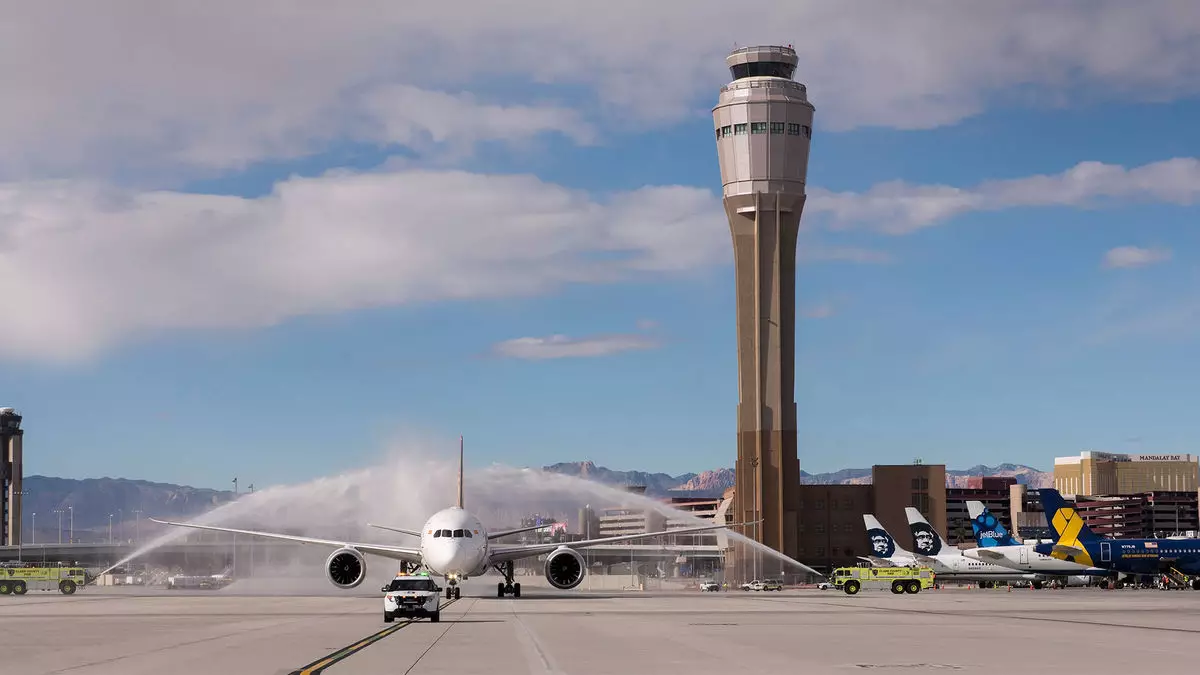As Southern Nevada gears up for a new supplemental airport located approximately half an hour from the vibrant Las Vegas Strip, plans for the modernization of Harry Reid Airport are taking center stage. On October 1, the Clark County Commission was introduced to an ambitious proposal by the county’s Department of Aviation that seeks to expand and enhance Terminal 1. The airport, already experiencing a surge in passenger traffic, recognizes the need for infrastructural improvements to accommodate future growth. Given the airport’s historical significance as a key transport hub in the region, these developments are of paramount importance to ensure that it remains competitive and efficient.
The conceptual plan unveiled by aviation officials outlines the addition of 26 new gates to Terminal 1, increasing the total from 39 to a robust 65. This significant enhancement is part of a larger strategy to rethink the design of the terminal, moving away from the outdated satellite gate layout to a more effective pier design. While no definitive timeline was provided for the project, the urgency behind these renovations was clearly expressed by airport officials, who are set to engage with airline executives to align on operational requirements in December.
In 2023 alone, Harry Reid Airport welcomed a record-breaking 57.6 million passengers, reflecting a 9.4% increase from the previous year. This growth not only underscores the pressing need for expansion but also positions the airport as a critical player in the overall dynamics of air travel in the region. With demand surging and more passengers flocking to Las Vegas, the necessity for a more adaptable and spacious terminal system is indisputable.
Bryant Holt, the managing director of planning for the Clark County Department of Aviation, articulated concerns related to the aging infrastructure of Terminal 1, which currently handles 75% of the airport’s passenger traffic. He noted that the existing facilities are not sustainable for current demands or future growth prospects. The current designs and layout contribute to operational inefficiencies, heightening the urgency for modernization. The plan to occupy the site where the old Terminal 2 once stood aims to address these critical issues by adding approximately 46,000 square feet of functional space, thereby improving passenger flow and operational efficiency.
Holt also emphasized the need for better amenities, including spacious hold rooms and cutting-edge wayfinding technologies that streamline the passenger experience. This focus on improved operational functionality is essential to handle the increasing volume of travelers expected at the airport.
A key component of the expansion strategy is balancing passenger distribution between Terminal 1 and the newly constructed Terminal 3. The latter, which opened in 2012 at a cost of $2.4 billion, currently accommodates about 25% of passengers. By redesigning the flow of terminal usage, airport officials hope to lessen confusion caused by the absence of Terminal 2 and enhance overall operational efficiency.
Central to this strategy is the construction of a new terminal-to-terminal flyover roadway designed to segregate airport traffic from commuter traffic. This innovative design aims to reduce congestion during peak hours, which is critical for maintaining the smooth operation of both airport and surrounding infrastructures. New express elevators and improved baggage handling systems are also part of the redesign to facilitate quicker and more efficient passenger circulation throughout the terminals.
Funding for the proposed expansions remains nebulous, as cost estimates were not disclosed during the presentation. However, officials suggested leveraging bonds supported by airport-generated revenue, including landing fees, concessions, and parking. County Commissioner Jim Gibson clarified that it’s not feasible to leave existing facilities unimproved while waiting for the completion of the supplemental airport; immediate actions are needed to address current limitations at Reid Airport.
Despite future proposals such as the Southern Nevada Supplemental Airport set to open in 2037, officials believe that Harry Reid will continue to serve as the central hub of the region. According to Holt, the system’s existing airport setup is insufficient to meet present-day demands, and the supplemental airport will ultimately alleviate some pressures by offering expanded airspace and runways.
As plans for expansion at Harry Reid Airport come into view, the strategic enhancements aim to position the airport favorably for anticipated future growth. The incorporation of modern technology, improved passenger amenities, and efficient infrastructure reflects a forward-thinking approach essential for competing in today’s rapidly evolving travel landscape. As discussions progress and plans materialize, one thing remains clear: Harry Reid Airport is poised for a transformative journey that secures its place in both the present and the future of Southern Nevada’s connectivity.


Leave a Reply